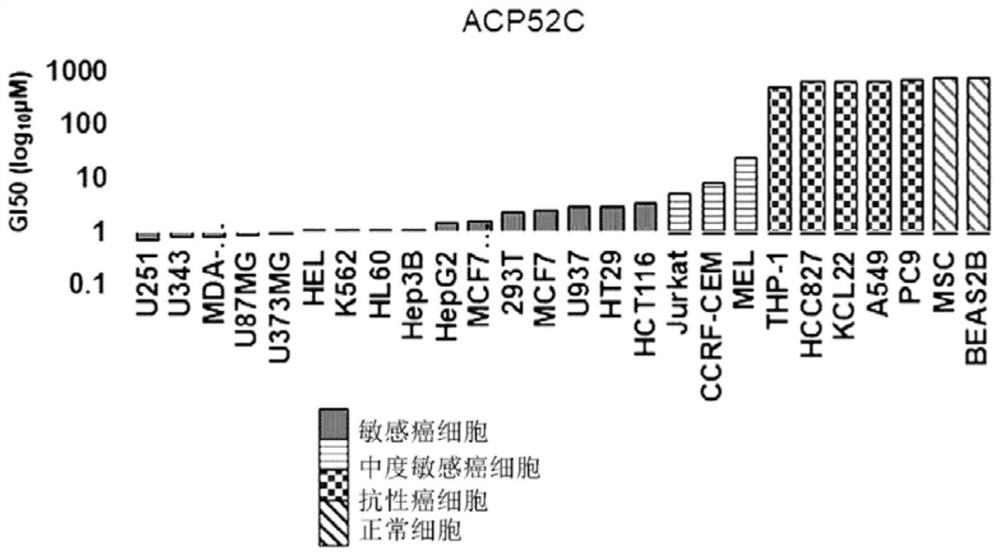Cp2c-targeting peptide-based anticancer agent
A technology targeting peptides and C-terminals, which is applied in the direction of peptides, antineoplastic drugs, peptide/protein components, etc., and can solve the problems of stability, safety and drug resistance that have not yet been developed.
- Summary
- Abstract
- Description
- Claims
- Application Information
AI Technical Summary
Problems solved by technology
Method used
Image
Examples
preparation example 1
[0077] [Preparation Example 1] Preparation of CP2c targeting peptide conjugated to cell penetrating peptide
[0078] The transcription factor CP2c is known to be overexpressed in various cancers. According to a study by an American research group, it was reported that inhibition of CP2c expression in liver cancer cell lines suppressed cell growth, while overexpression of CP2c led to cancer progression and metastasis [Grant et al., Antiproliferative small-molecule inhibitors of transcription factor LSF reveal oncogene addiction to LSF in hepatocellular carcinoma, Proc. Nail. Acad. Sci. 2012; 109(12): 4503-4508].
[0079] The present inventors identified peptides that bind to transcription factor CP2c (also known as Tfcp2, LSF, LBP1, UBP1, etc.) by phage display method [Kang et al., Identification and characterization Of four novelpeptide motifs that recognize distinct regions of the transcription factor CP2 , FEBS Journal 2005; 272:1265-1277], a type of peptide (CP2c targeting...
Embodiment 1
[0080] [Example 1] Determination of the anticancer effect of ACP52C
[0081] The selected peptides bind to CP2c and inhibit the formation of CP2c-containing transcription factor complexes (CP2c homotetramer and CP2c / CP2b / PIAS1 heterohexamer), thereby indirectly interfering with CP2c DNA binding. As a result of analyzing the anticancer effect of synthetically targeted ACP52C in various cancers, it was confirmed that it exhibits cancer cell-specific growth-inhibiting and cell-death potency ( figure 1 ).
[0082] The growth inhibitory and cell death inducing potency of ACP52C was confirmed by FACS analysis by treating cells with ACP52C after cell cycle synchronization to G1 / S phase by double thymidine blockade. As a result, it was confirmed that polyploidy was formed when the cell cycle was arrested in the G2 / M phase. On the other hand, it was demonstrated that when ACP52C was applied to a cell line synchronized to G2 / M phase with thymidine / nocodazole treatment, the cell cycle...
preparation example 2
[0086] [Preparation Example 2] Synthesis of CP2c targeting peptide-fatty acid conjugate
[0087] Our data suggest that, although ACP52C shows promising anticancer activity, ACP52C may be unstable in vivo. As an effort to improve the in vivo stability of ACP52C, 4 types of albumin-affinity C were synthesized 16 Fatty acid (palmitoyl acid) conjugated peptide ( Figure 7 ). Each peptide was synthesized with N- and C-termini modified, followed by C 16 A fatty acid is conjugated to each peptide.
PUM
 Login to View More
Login to View More Abstract
Description
Claims
Application Information
 Login to View More
Login to View More - R&D
- Intellectual Property
- Life Sciences
- Materials
- Tech Scout
- Unparalleled Data Quality
- Higher Quality Content
- 60% Fewer Hallucinations
Browse by: Latest US Patents, China's latest patents, Technical Efficacy Thesaurus, Application Domain, Technology Topic, Popular Technical Reports.
© 2025 PatSnap. All rights reserved.Legal|Privacy policy|Modern Slavery Act Transparency Statement|Sitemap|About US| Contact US: help@patsnap.com



